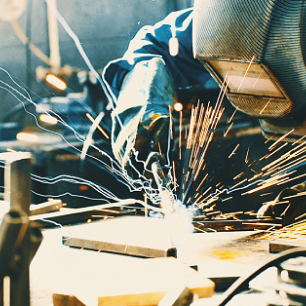Jump to:
What is Flux in Soldering? How It Works and Why It’s Essential
If you’ve ever tried soldering without using flux, you’ve likely learned the hard way why it’s a must-have. Soldering isn’t just about heat and metal — it’s about control. And one of the most important tools for control is flux. Flux in soldering isn’t just a “nice extra” — it’s a chemical cleaning agent that makes solid, reliable joints possible.
Whether you’re working on electronics soldering, plumbing repairs, printed circuit board (PCB) assembly, or even jewelry soldering, understanding what soldering flux does and how it works can make the difference between a strong connection and a frustrating redo.
What is Soldering Flux?
Soldering flux is a compound applied to metal surfaces before and during the soldering process. Its main purpose is to clean metal surfaces and prevent oxidation so molten solder can bond properly. Without flux, oxidation forms quickly on heated metals, creating a barrier that stops solder from wetting and flowing as it should.
How Flux Works
When heated, flux activates — breaking down oxides and impurities on the work surface. It also creates a protective layer that keeps oxygen in the air from reacting with the hot metal. A small amount goes a long way. Apply flux where the solder will flow, heat the joint evenly, and clean any flux residue when you’re done — especially on electronics. The result is improved solder flow and a cleaner, more uniform joint.
Think of it like prepping a wall before painting: without cleaning and priming, the paint won’t stick. In soldering, flux is that all-important primer.
Types of Soldering Flux
Different applications call for different flux formulations. The most common types include:
Rosin Flux – Made from natural resin, ideal for electronics soldering. Leaves residue that must be cleaned.
Water-Soluble Flux – Removes oxidation aggressively, and residue can be rinsed away with water. Common in PCB soldering.
No-Clean Flux – Designed to leave minimal residue, often used where cleaning is difficult.
Acid Flux – Strong and corrosive, used in plumbing soldering and not recommended for electronics.
Each type has a different flux composition and activation temperature, so choosing the right one for your project is key.
Why Flux is Essential
Skipping flux can lead to poor solder joints, weak bonds, and time-consuming rework. By removing oxidation, aiding solder flow, and maintaining clean contact surfaces, flux boosts joint reliability and lifespan.
Common Problems & Tips
Even with flux, results can vary depending on technique. Here are a few flux application tips:
Apply a thin, even layer — too much flux can leave stubborn residue.
Use the correct flux for the metals and solder alloy in your project.
For electronics, clean away residue to avoid corrosion or signal interference.
Final Thoughts
Flux may be small in quantity, but it’s huge in importance. Knowing the purpose of soldering flux, the types available, and how flux works will help you tackle projects in electronics, plumbing, jewelry making, and beyond with confidence — and joints you can trust.


